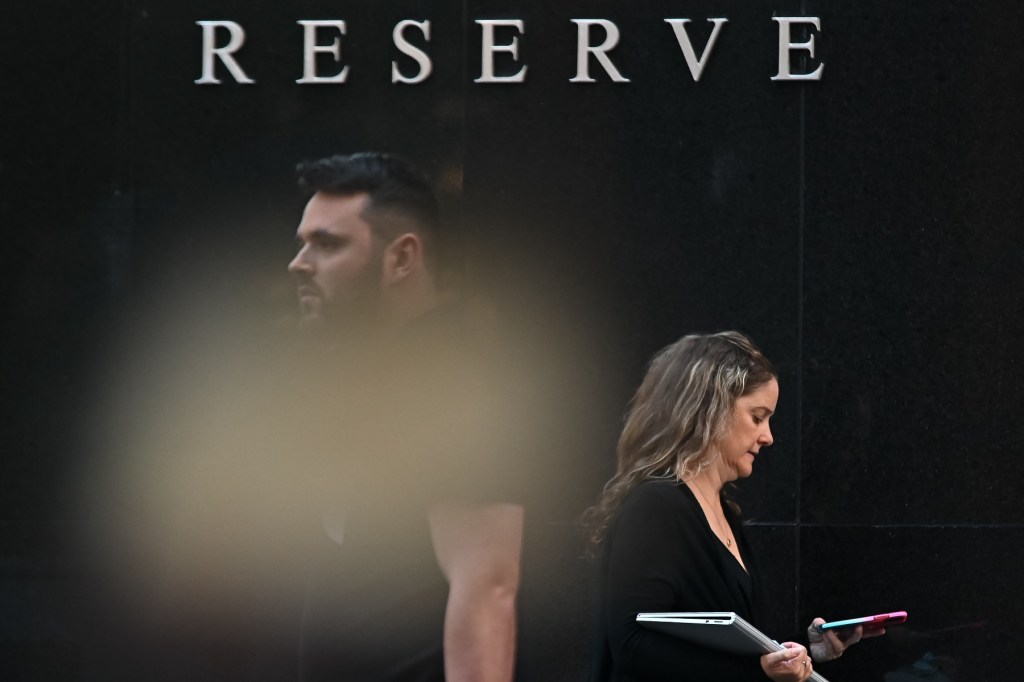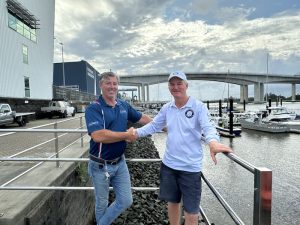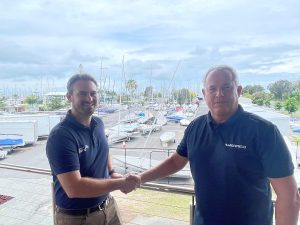Here is Qantas’ new A321XLR business class

- by Admin
- August 29, 2024

Executive Traveller exclusive
Qantas will begin flying its new Airbus A321XLR jets from April next year, and passengers can look forward to a fresh yet in many ways familiar experience in both business and economy class.
This starts with new seats to replace the decades-old pews of the Boeing 737s, which are on their way out as the A321XLRs swoop in to become Qantas’ single-aisle workhorse on domestic and short-range international flights (such as New Zealand, Fiji and Noumea).
But temper your expectations: the A321XLR seats are essentially a modernised version of those of the 737, in fact they’re almost identical to the newer Qantas A220, including the lack of seatback video screens.
Instead, all passengers on the Qantas A321XR will have to either bring their own entertainment or use the Qantas Entertainment App to stream content from the plane’s library of movies and TV shows to their smartphone or tablet.
“Nearly half of all the customers Qantas carries each year travel on our 737 fleet so the A321XLR aircraft that we’ve ordered to replace them will be incredibly important for our future,” notes Qantas Group CEO Vanessa Hudson.
“The A321XLR is a fantastic aircraft to be part of our next generation fleet, and its range and versatility will give us to opportunity to explore more non-stop routes and operate them cost effectively.”
Qantas A321XLR business class
Up front will be 20 of the latest business class seats, arranged in five rows of a 2-2 layout.
That’s a 66% increase from the 737’s 12 business class berths, indicating Qantas’ continued confidence in the premium travel sector.
Legroom will be about the same as on the Boeing 737, where the pitch is 37” in business class, with a 5” recline; other comfort factors include both calf-rests and legrests.
But as with the Qantas A220, without seatback video screens passengers will have to bring their own device, which can be perched onto fold-down holders and plugged into adjacent USB-A and USB-C ports.
Also on the power front: each A321XLR business class seat also gets its own wireless charging pad (built into a nook under the armrest), but there’s no AC outlet.
And as on the 737, these A321XLR business class seats are recliners rather than lie-flat beds – although that’s totally in keeping with their relatively short routes of up to 5 hours, ranging from the ‘golden triangle’ of the east coast capitals (Brisbane-Sydney-Melbourne) plus nearby Pacific destinations to transcon journeys.
However, as the A321XLR’s extensive range can deliver non-stop flights of 10+ hours from Australia to most of south-east Asia, Qantas is considering business class flatbeds for a second ‘international’ fleet of A321XLRs.
Qantas A321XLR economy class
Behind the partition of the business class cabin stretches a bank of economy seats in that familiar 3-3 layout.
The A321XLR’s longer body allows Qantas to fit 177 seats down the back of the (Air)bus – a 9% boost over the 737’s economy class – but with the same minimum 30” pitch, although there are several extra legroom rows.
(The first three A321XLRs to be delivered will have 180 seats, but Executive Traveller understands a block of three seats will be replaced by an additional economy lav on A321XLRs four and onwards.)
If the seats look familiar, that’s because they’re from the same manufacturer – Recaro – as the Qantas A220 and forthcoming Qantas A350, and have received the same styling touch by Qantas designer David Caon.
In fact, the Qantas A321XLR uses an identical seat as the A350 Project Sunrise jets, which is a lighter-weight version of the A220’s Recaro economy seat.
While Qantas has opted for this slimline seat design, the advanced materials and ergonomic design could deliver a little more legroom – or rather knee-room, which is usually where things get tight – while the seat itself is very slightly wider (we’re talking 1.5cm) than on the 737, and has extra cushioning.
Each Qantas A321XLR economy seat is fitted with a USB-C power outlet and a flip-down ‘device holder’ ledge where you can perch your smartphone or tablet.
Qantas A321XLR, from tip to tail…
No matter where you’re sitting on the Qantas A321XLR, you’ll be able to tap into the same fast and free WiFi as on the Boeing 737s.
Qantas has also configured its A321XLRs with oversized ‘Airspace XL’ luggage bins unlocking 60% more space compared to the 737.
These can not only accommodate larger cabin bags, they allow standard roll-on bags to be loaded on their sides instead of flat, creating room for up to four bags in each bin.
Passengers will also notice a more spacious feel on board the A321XLR compared to the 737, due to a wider cabin and larger windows; the jet is also slightly quieter, especially when cruising.
Where Qantas will fly the A321XLR
The Qantas has signed up for an initial 28 A321XLRs “and we have options for a lot more” says Qantas Chief Financial Officer Rob Marcolina – and they’ll be needed, given the airline has 75 Boeing 737s to be retired over the next ten years.
“Domestically, the XLRs will obviously be flying on our trunk markets” such as ‘the golden triangle’ of Australia’s east coast capitals, “and also east-west,” Qantas Group CEO Vanessa Hudson told Executive Traveller in June this year.
But the red-tailed A321XLRs will also spread their wings much further afield, thanks to an additional high-capacity fuel tank boosting its non-stop capability to as much as 11 hours or 8700km.
That’s almost 3,000km more than the Qantas Boeing 737, and sufficient for direct flights from Australia to most of south-east Asia – opening up new routes where the economics of limited passenger numbers can’t justify larger twin-aisle jets such as the Airbus A330 or Boeing 787.
“Internationally the XLRs will be able to enter markets we haven’t been able to commercially operate” Hudson said, citing potential overseas XLR routes such as Adelaide-Singapore, Canberra-Singapore” as well as flights from Darwin and Perth, and “up into India (and) Malaysia.”
“We will absolutely consider all those routes” Hudson said, “and we’ll consider the product that we put on those aircraft as well.”
Qantas A321XLR business class flatbeds?
For that reason, business class flatbeds are being considered for a special fleet of ‘international’ A321XLRs.
“That’s something that we’re in the middle of analysing at the moment,” Qantas International CEO Cam Wallace told Executive Traveller during a briefing at Airbus headquarters in Toulouse, France, in July this year.
“One of the options is a sub-fleet with a lie-flat product” which would be focussed on international routes, and “we’re looking at the layout right now.”
“Obviously if you go for a lie-flat option you lose some seat density, and primarily they will be on the medium- to short-haul market.”
However, introducing two variations of the A321XLR adds cost and complications, while also reducing the ability to easily move aircraft across routes and around the network.
“We are in deep analysis at the moment on how many aircraft we could have in different configurations,” Wallace confirmed.
“We think that there’ll be enough medium-haul routes that we’ll be able to expand the network and (directly) connect cities, where people have to either go on a low-cost carrier or go through a midpoint hub… there’s quite a significant range of network options for that aircraft.”
So does Wallace expect passengers will be happy to spend eight to ten hours on the single-aisle Qantas A32XLR? “Yeah, if we get the right product.”
Building out the Qantas A321XLR network
It’s also possible these international Qantas A321XLRs, with their higher degree of comfort – at least in business class – could dovetail into domestic east-west flying.
“Obviously it’ll be flying domestically as well, but with the likes of the Perth Western hub, we think there’s a lot of city pairs that we can connect… there are many, many A321XLR markets from India right through to Asia.”
“Some of them could be overnight flights, some of them could be day flights, so we’re just working through that.”
The prospect of those long flights, especially on overnight legs, should make flatbeds in the A321XLR business class a must-have – not just for passenger comfort of passengers but the competitiveness of Qantas.
Oneworld partner American Airlines will outfit its A321XLRs, also due to fly early next year, with private business class Flagship Suites which not only have fully-flat beds but sliding privacy doors.
And while American’s A321XLRs have the legs to fly all the way into Europe, they’ll first be seen on domestic transcontinental east-west routes such as Los Angeles and San Francisco to New York and Boston.
Qantas boss Hudson has notably also cited US east-west routes – which take roughly the same time as in Australia, albeit in a substantially larger market with four main carriers – as a benchmark for premium lie-flat business class.
“If you think about, and obviously we’ve made no decisions on this, but if you think about what’s happening in the US transcontinental (market), you’ve got a very kind of similar premium product,” Hudson told Executive Traveller.
“We’re not going to ever constrain ourselves to say these aircraft are just domestic or just international – the aircraft have got the capability to fly both.”
“So we need to make sure that we are using the aircraft and flying them and networking them as best we can.”
The Latest News
-
December 25, 2024Gearing Up for Australian Open, Nick Kyrgios Elevated in Bold Predictions From Renowned Tennis Experts
-
December 25, 2024Dads’ day out! Australian stars unwind with with wives, kids at MCG. Watch | Cricket News – Times of India
-
December 25, 2024India must continue to exploit ‘brittle’ Australian line-up: Ravi Shastri | Cricket News – Times of India
-
December 25, 2024Warne, Tendulkar, Muralitharan and (even) Gladstone Small: Eleven Boxing Day Test memories
-
December 25, 2024Where to watch Chiefs vs. Steelers in Australia: Streams, TV channel, time for NFL Christmas game live and on demand | Sporting News Australia











